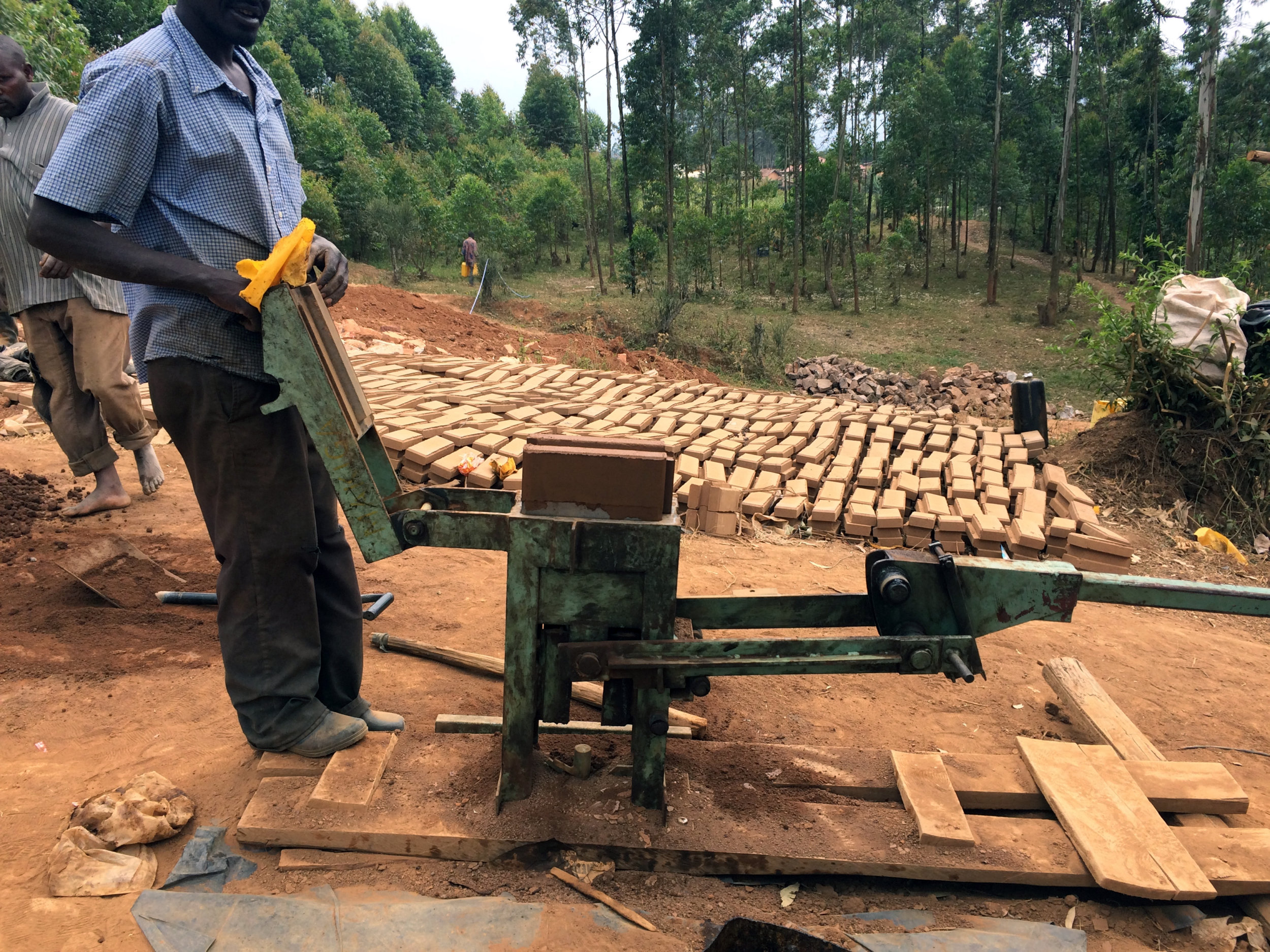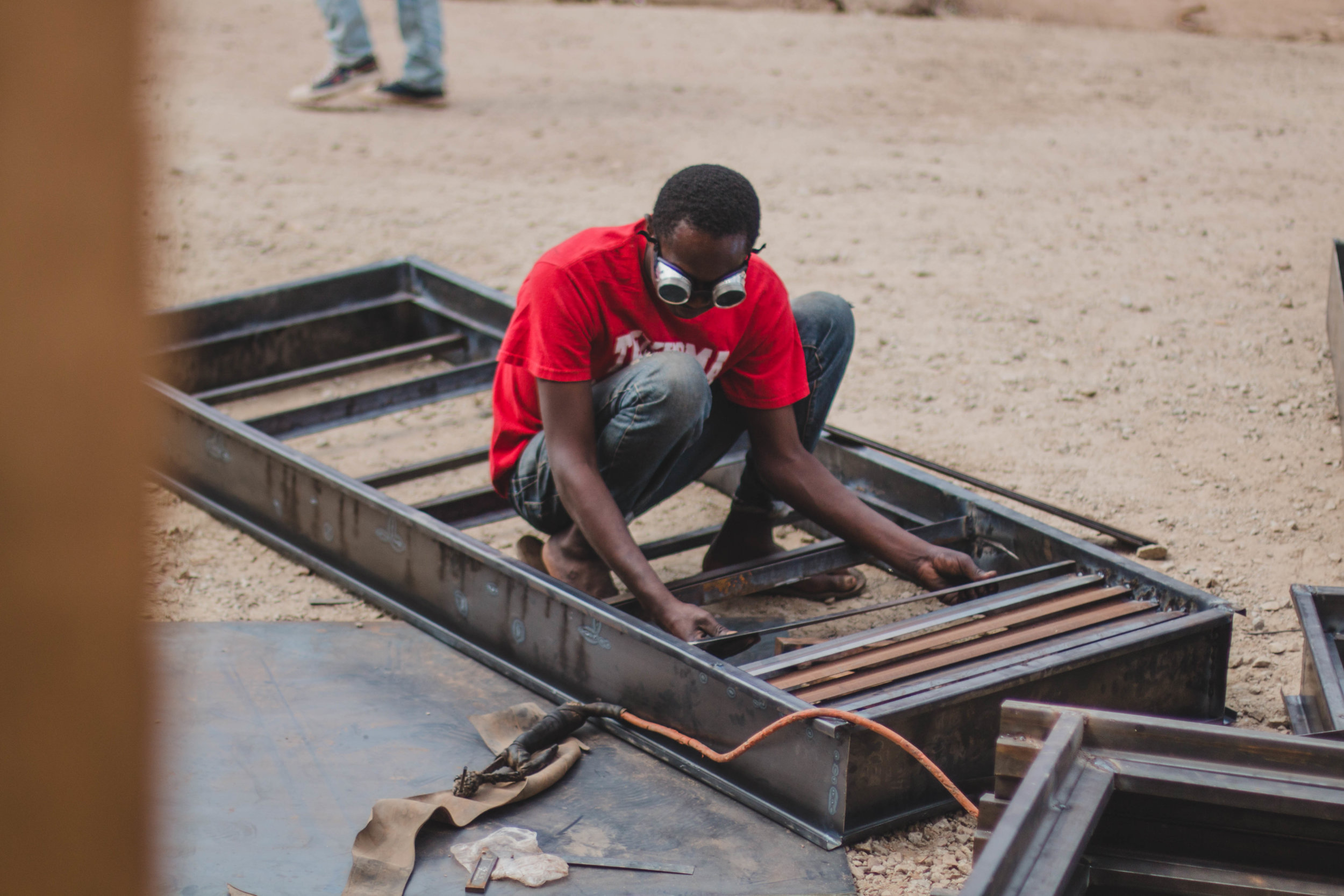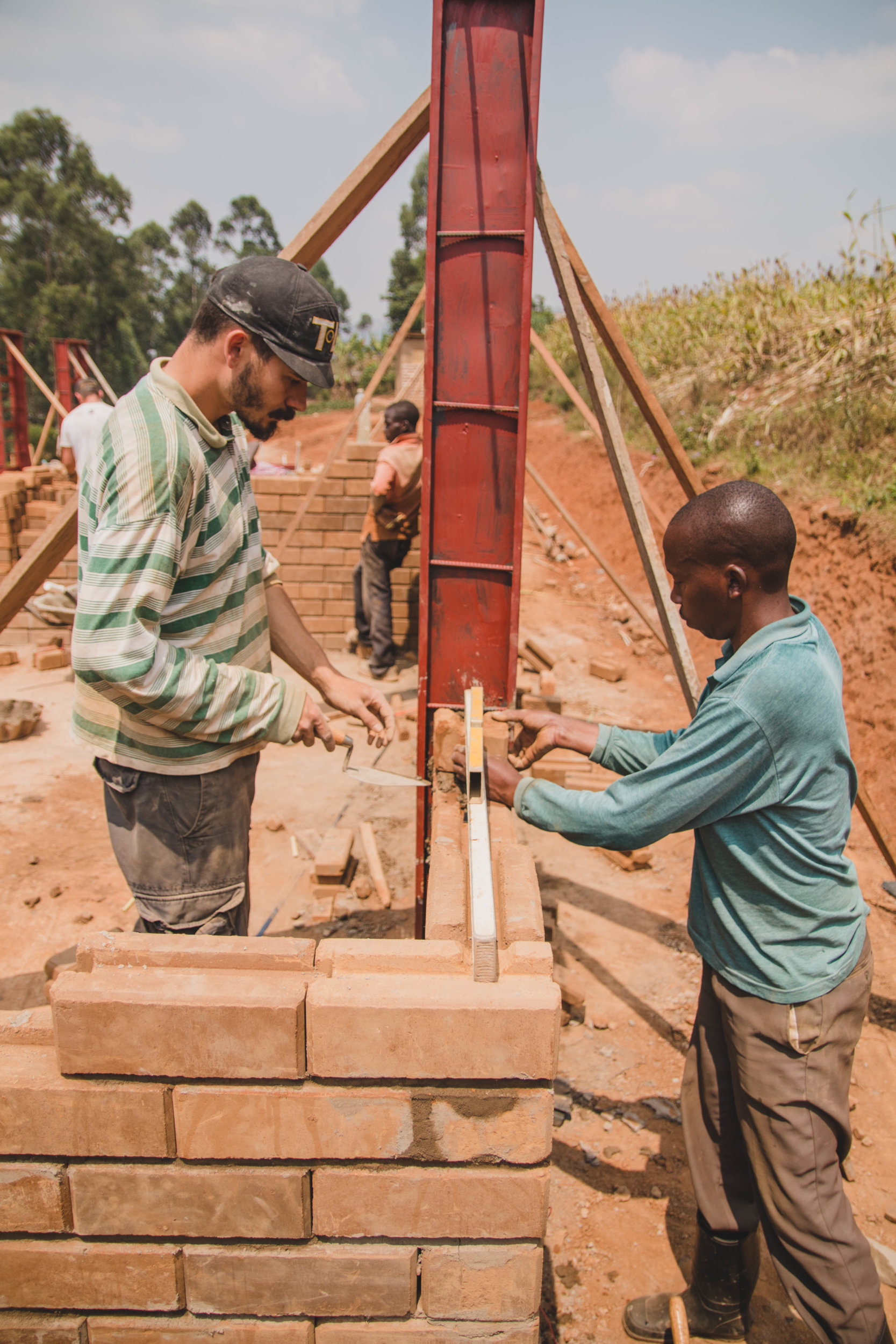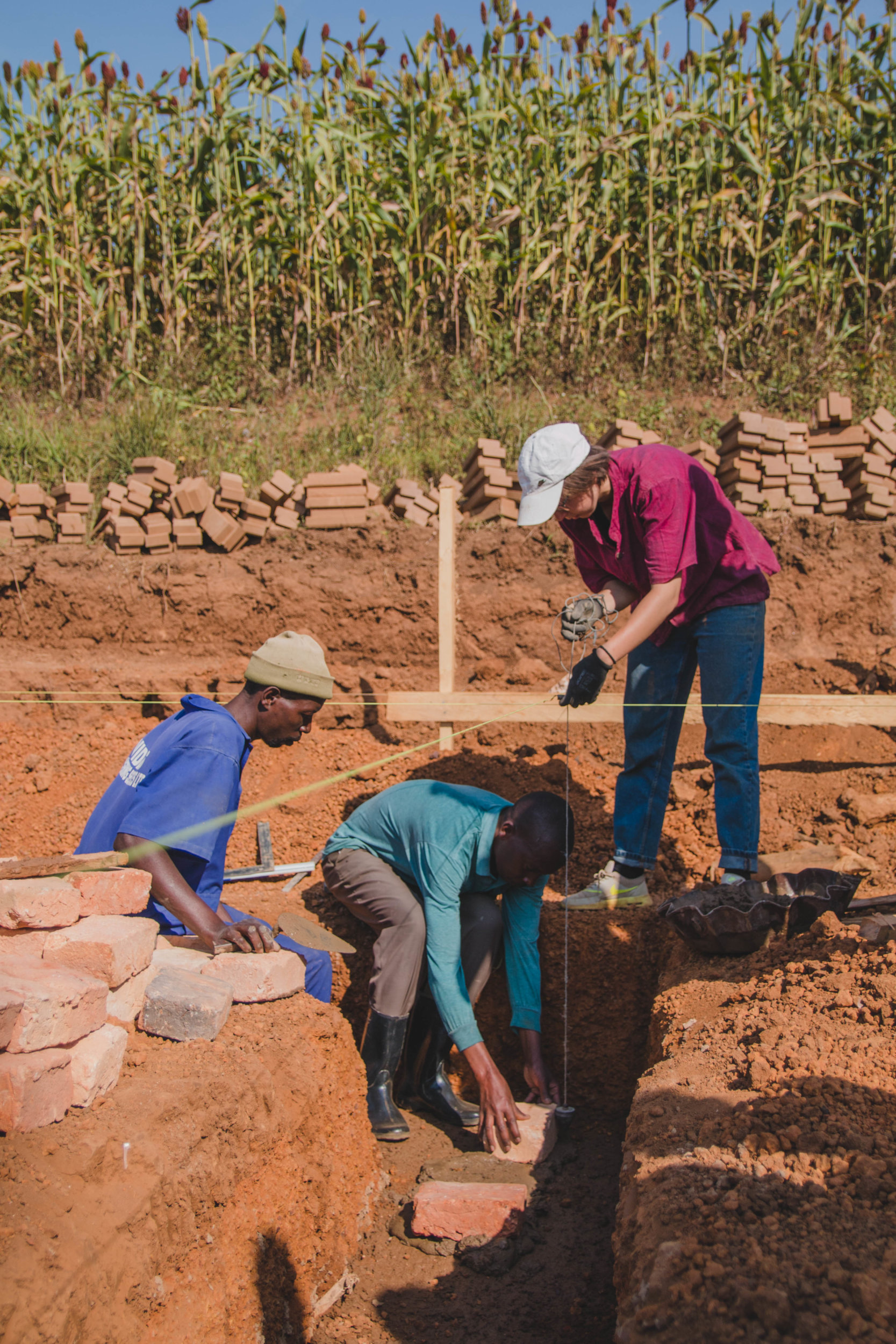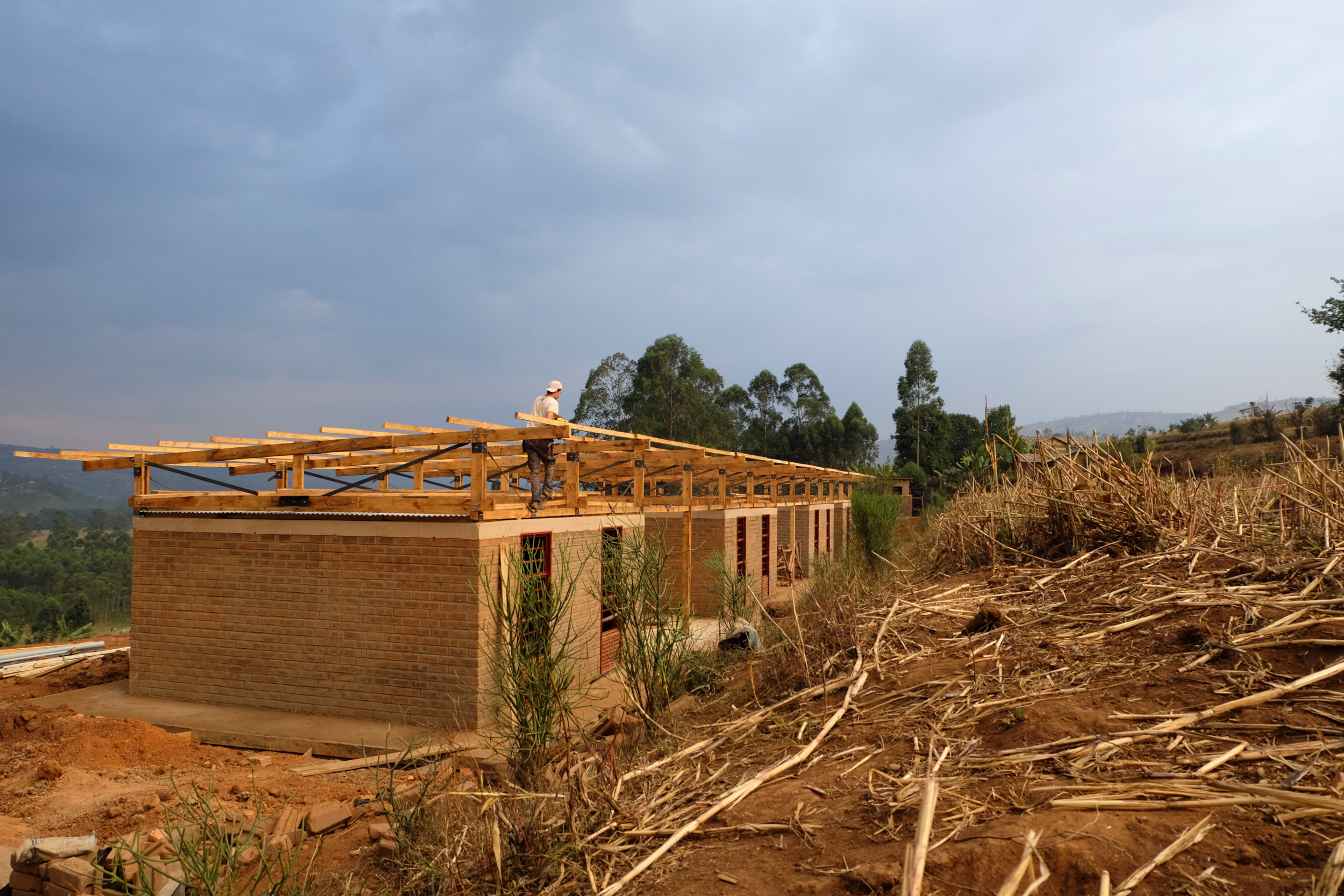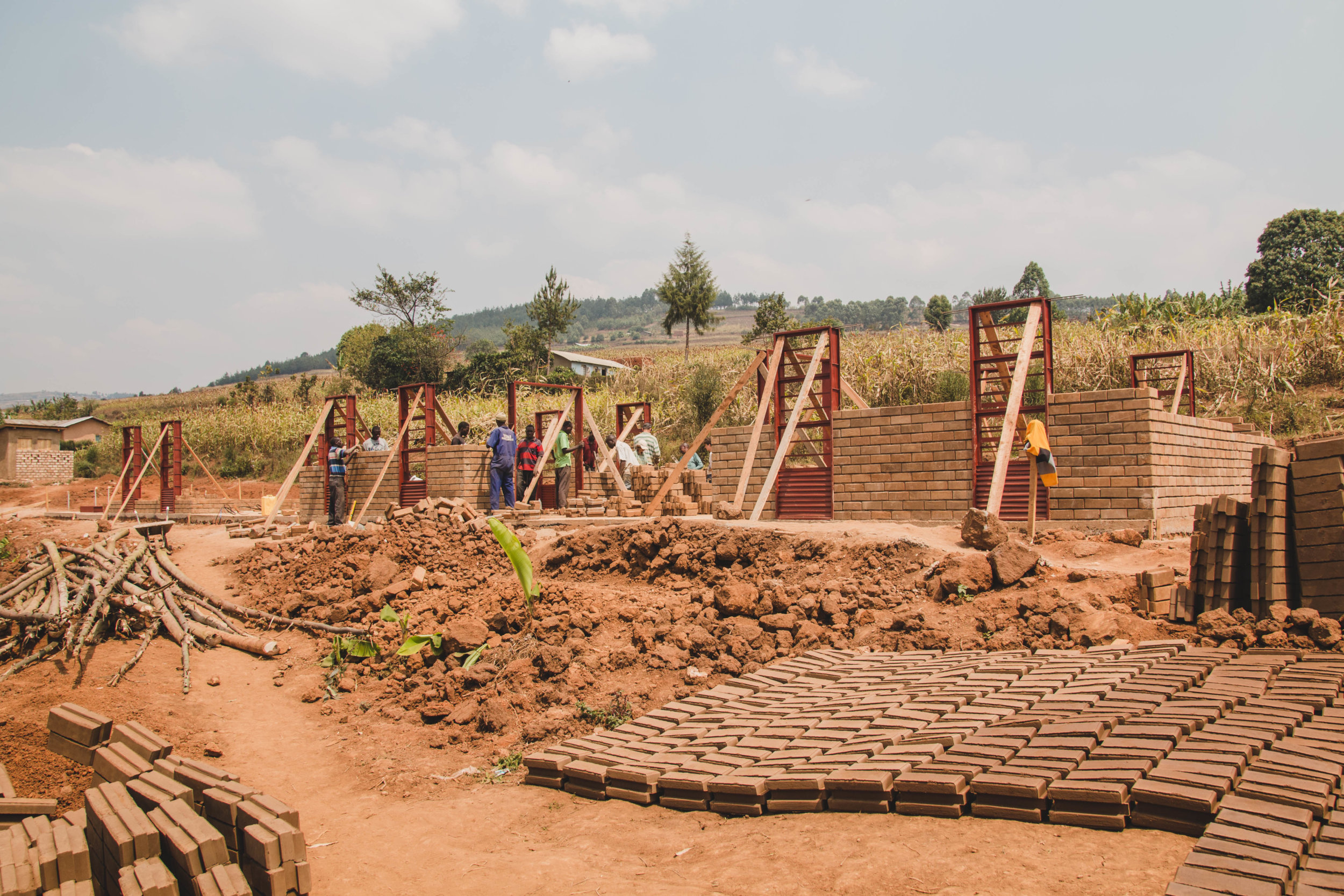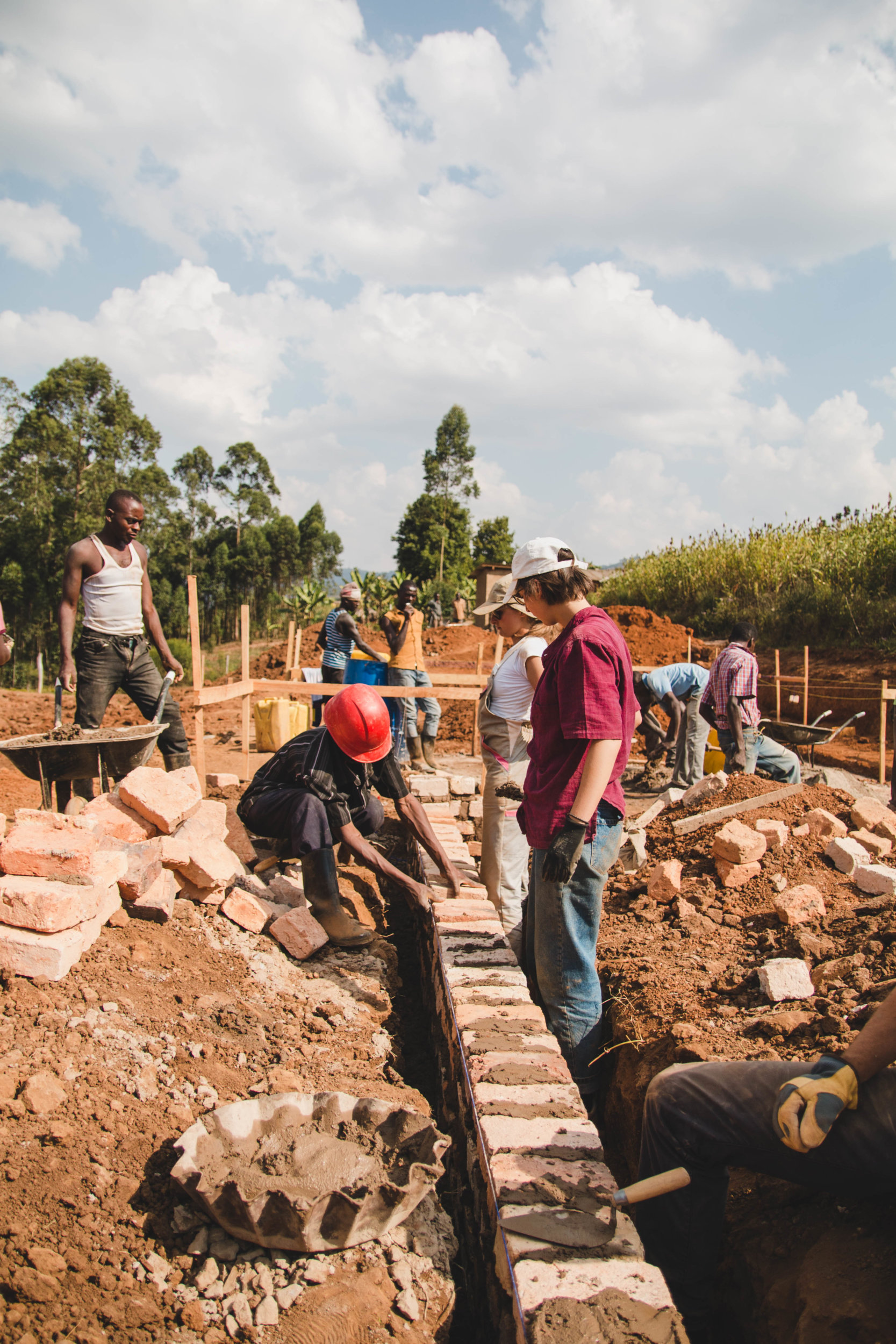Amasiko, halfway home for street children
Construction: Jul-Aug 2017 (Kabale, Uganda)
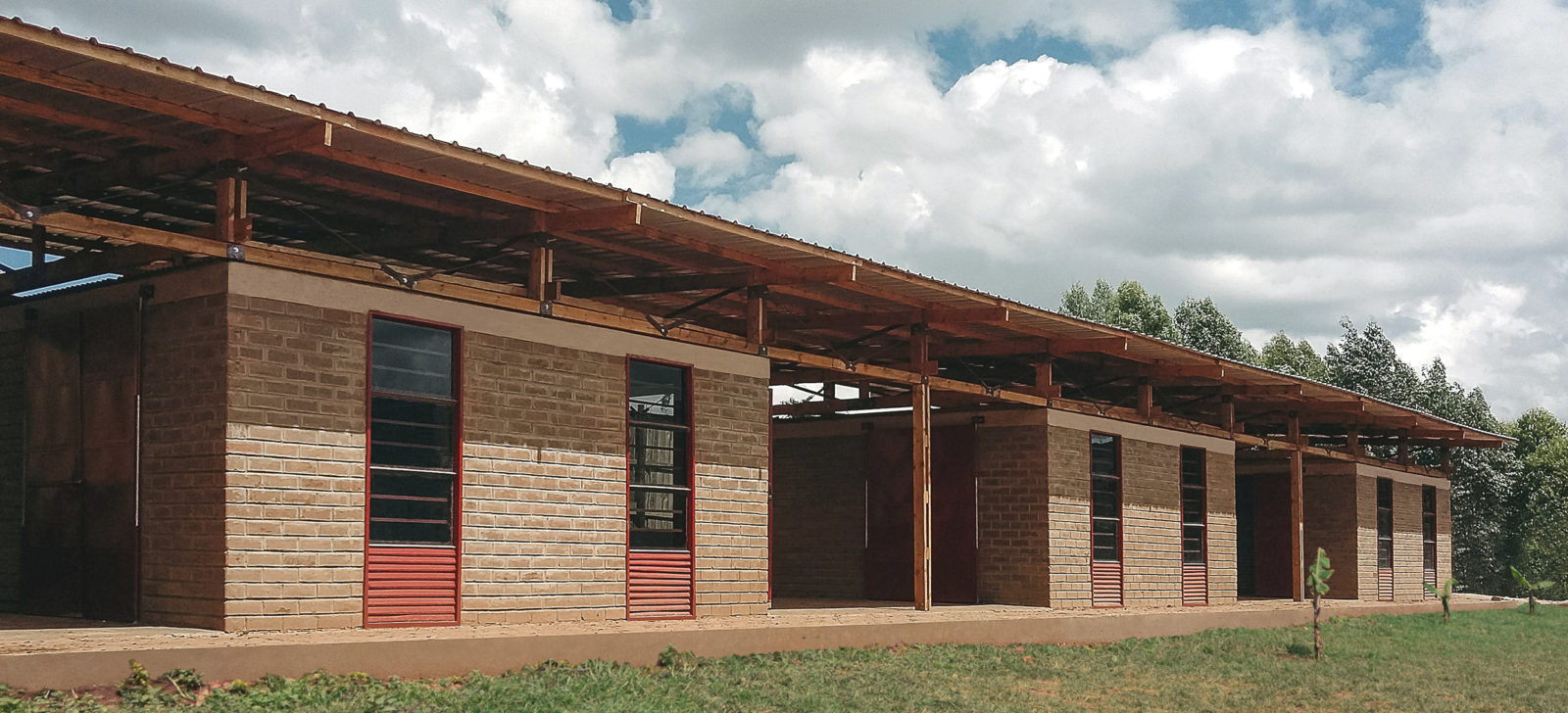
“Amasiko” was the third project carried out by students and mentors of the Faculty of Architecture in Sub-Saharan Africa, in one of the poorest regions of Uganda. It was carried out in cooperation with the British humanitarian organization Alongside Africa, and the construction work itself was assisted by local workers.
The project addresses the issue of children who live on the streets due to poverty or family circumstances. Now, the halfway home “Amasiko” can provide shelter, food, as well as basic and vocational education to thirty children for a period of up to one year. It also assists youths in their search for further education or employment.
Amasiko is composed of a residential building and a separate kitchen. Architecturally, the building was designed with the characteristics of the terraced land and the climate in mind. The long residential building is located on the upper terrace, while the kitchen is situated on the lower one. The intense sun of the dry season and rainfall of the rainy season necessitated the connected, covered outdoor spaces for learning and play that provide protection from both sun and rain.
Both buildings were constructed using compressed earth blocks, made from a mixture of soil and cement, which were then air-dried. The advantages of using such materials are both financial and ecological: The blocks’ production is cost-effective as it utilizes readily available resources and takes place on-site, and ecologically friendly as it avoids the consumption of wood typically used in making clay bricks. In the future, the production of compressed earth blocks will also serve as a source of income for the Amasiko transitional home, contributing to its sustainability.
